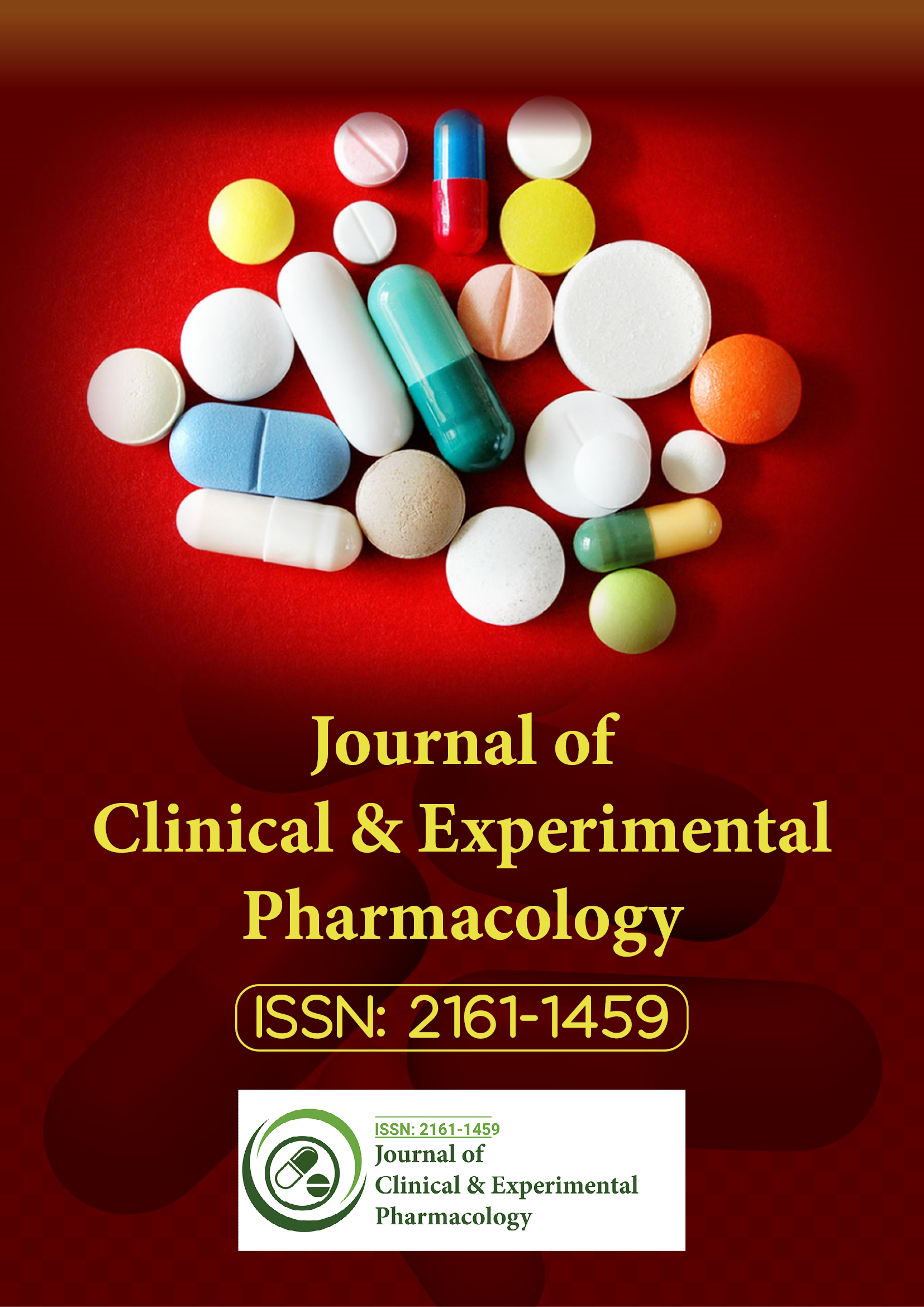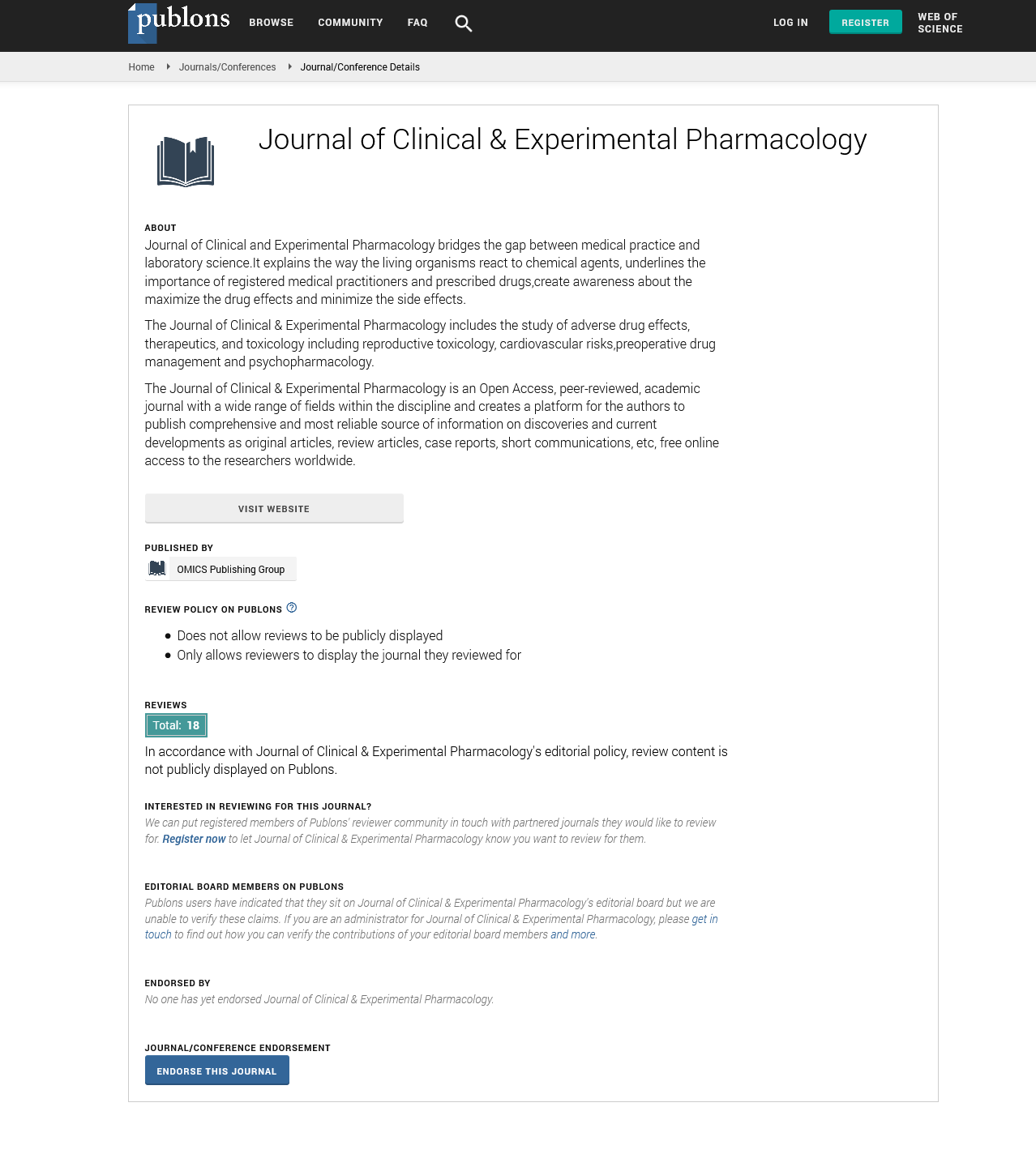Indexed In
- Open J Gate
- Genamics JournalSeek
- China National Knowledge Infrastructure (CNKI)
- Ulrich's Periodicals Directory
- RefSeek
- Hamdard University
- EBSCO A-Z
- OCLC- WorldCat
- Publons
- Google Scholar
Useful Links
Share This Page
Journal Flyer

Open Access Journals
- Agri and Aquaculture
- Biochemistry
- Bioinformatics & Systems Biology
- Business & Management
- Chemistry
- Clinical Sciences
- Engineering
- Food & Nutrition
- General Science
- Genetics & Molecular Biology
- Immunology & Microbiology
- Medical Sciences
- Neuroscience & Psychology
- Nursing & Health Care
- Pharmaceutical Sciences
Perspective - (2025) Volume 15, Issue 3
Pharmacokinetic-Pharmacodynamic (PK-PD) Modeling in Dose Optimization of Antimicrobial Agents
Wing Brad*Received: 06-Jun-2025, Manuscript No. CPECR-25-29369; Editor assigned: 09-Jun-2025, Pre QC No. CPECR-25-29369 (PQ); Reviewed: 23-Jun-2025, QC No. CPECR-25-29369; Revised: 30-Jun-2025, Manuscript No. CPECR-25-29369 (R); Published: 07-Jul-2025, DOI: 10.35248/2161-1459.25.15.485
Description
Pharmacokinetic-Pharmacodynamic (PK-PD) modeling has become a vital component of antimicrobial therapy development and clinical application. The global rise in antimicrobial resistance, along with concerns about treatment failures and toxicity, has driven the need for precise dosing strategies that ensure therapeutic success while minimizing unintended consequences. PK-PD modeling provides a quantitative framework to link drug concentration profiles with their biological effects, supporting optimal dose selection and regimen design.
Pharmacokinetics describes how the body absorbs, distributes, metabolizes and eliminates a drug, while pharmacodynamics characterizes the relationship between drug concentrations and microbial response. By integrating these two domains, PK-PD modeling enables prediction of how different dosing regimens influence antimicrobial activity in various clinical scenarios. This approach helps in achieving concentrations that exceed Minimum Inhibitory Concentrations (MICs) at infection sites, thus improving therapeutic efficacy and reducing the risk of resistance.
For antimicrobial agents, three key PK-PD indices are commonly used to predict efficacy: the ratio of maximum drug concentration to MIC (Cmax/MIC), the time the drug concentration remains above the MIC (T>MIC) and the area under the concentration-time curve relative to MIC (AUC/MIC). These indices vary in importance depending on the antimicrobial class. For example, beta-lactams typically rely on time-dependent killing, where T>MIC is the critical parameter, whereas aminoglycosides and fluoroquinolones exhibit concentration-dependent killing, making Cmax/MIC or AUC/MIC more relevant.
Understanding the PK-PD index for a particular drug allows clinicians to adjust dose frequency, infusion duration, or route of administration to maximize antibacterial activity. In the case of beta-lactams, continuous or prolonged infusions are often used to maintain plasma concentrations above the MIC, especially in critically ill patients who may have altered pharmacokinetics. For agents requiring high peak concentrations, such as aminoglycosides, dosing regimens aim for a high Cmax while allowing time for drug elimination to minimize toxicity.
Population PK-PD modeling plays an important role in evaluating variability among individuals, including differences due to age, weight, renal function and comorbid conditions. These models incorporate data from diverse patient populations to identify covariates that influence drug behavior, allowing for more individualized dosing strategies. This is particularly important in pediatric patients, the elderly and those with organ dysfunction, where standard dosing may lead to sub-therapeutic or toxic concentrations.
Monte Carlo simulations are often used in conjunction with PK-PD models to assess the probability of target attainment across a virtual population. These simulations estimate the likelihood that a given dosing regimen will achieve desired PK-PD targets, helping inform empirical therapy choices and dosing adjustments. They also assist in evaluating the efficacy of new dosing strategies before conducting large-scale clinical trials, providing valuable guidance in antimicrobial stewardship programs.
In drug development, PK-PD modeling is used to optimize dose selection during preclinical and early clinical phases. Animal infection models and in vitro pharmacodynamic studies provide data that are extrapolated to human scenarios using scaling techniques. These early insights guide the design of Phase I and II trials, reducing uncertainty and improving the efficiency of clinical development.
One of the challenges addressed by PK-PD modeling is the changing pharmacokinetics observed in critically ill patients. Factors such as increased volume of distribution, augmented renal clearance and altered protein binding can significantly affect drug levels, making standard dosing inadequate. PK-PD tools support therapeutic drug monitoring and real-time dose adjustments, ensuring effective therapy in these complex clinical situations.
Another area of application is the evaluation of combination therapy. In some infections, the use of two or more antimicrobial agents may be necessary to broaden the spectrum of activity or prevent resistance. PK-PD models help predict the interaction between drugs, whether additive, synergistic, or antagonistic and support decisions about the most effective combinations. This has been particularly relevant in the treatment of multidrug-resistant Gram-negative infections and tuberculosis.
PK-PD modeling is also being integrated with genomic and microbiologic data to refine predictions further. Advances in pathogen genomics and resistance mechanisms allow models to incorporate strain-specific information, enhancing their precision. Similarly, integration with host immune response parameters can lead to more accurate assessments of treatment efficacy in immunocompromised individuals.
Limitations of PK-PD modeling include the quality and completeness of data, especially in heterogeneous populations or under-researched pathogens. In some cases, limited clinical correlation data exist to validate model predictions, requiring further prospective studies. Despite these limitations, the utility of PK-PD modeling in guiding evidence-based therapy continues to expand.
In conclusion, PK-PD modeling represents a powerful tool in optimizing the use of antimicrobial agents. By quantitatively linking drug exposure to microbiological and clinical outcomes, it enables more precise dosing, reduces the risk of resistance and improves patient outcomes. Its application spans drug development, clinical practice and public health, supporting a rational approach to antimicrobial use in an era of increasing resistance. As technology and data integration continue to evolve, PK-PD modeling is expected to play an even greater role in personalizing therapy and guiding stewardship efforts across healthcare settings.
Citation: Brad W (2025). Pharmacokinetic-Pharmacodynamic (PK-PD Modeling in Dose Optimization of Antimicrobial Agents. J Clin Exp Pharmacol. 15:485.
Copyright: © 2025 Brad W. This is an open-access article distributed under the terms of the Creative Commons Attribution License, which permits unrestricted use, distribution and reproduction in any medium, provided the original author and source are credited.

